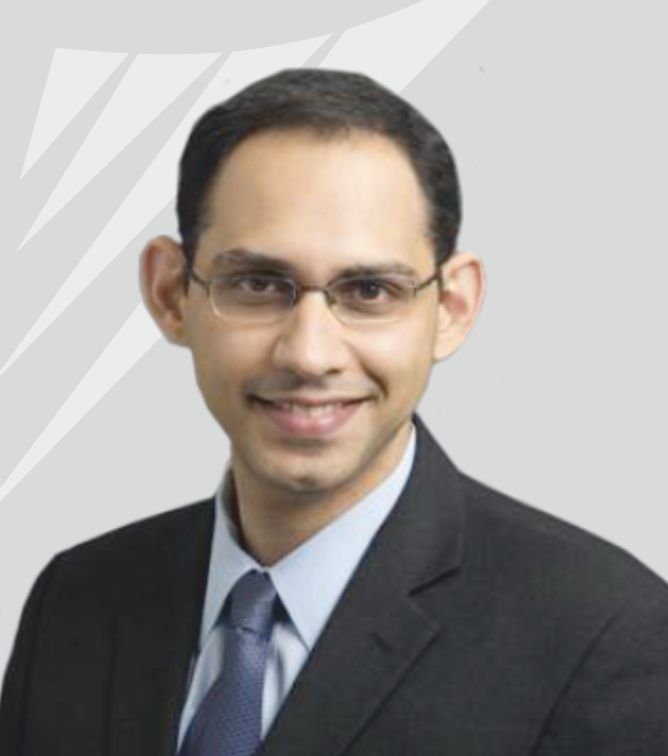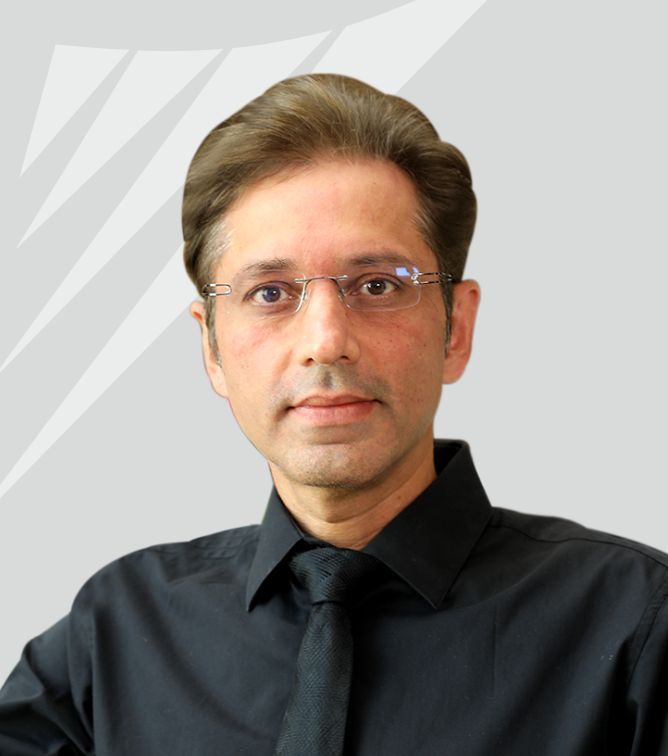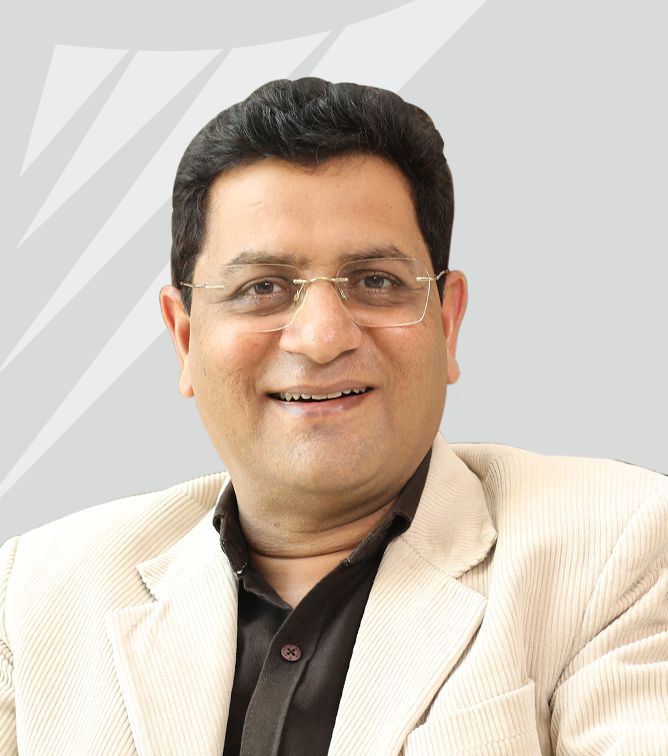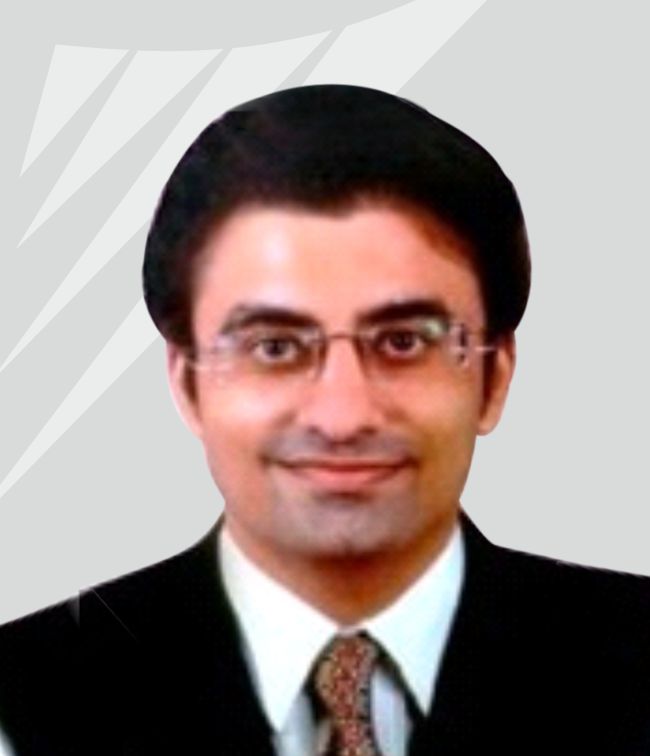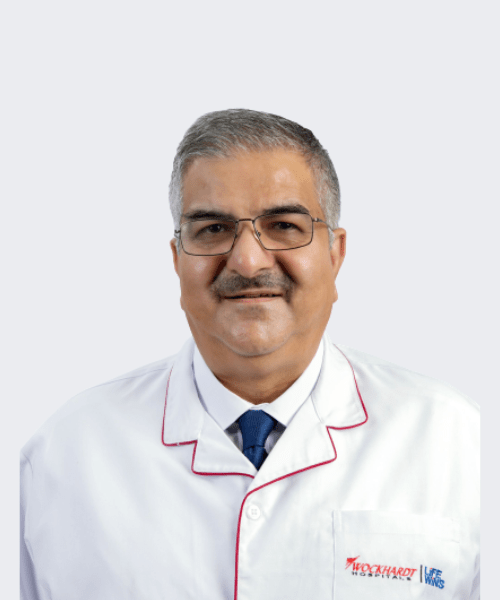Home » Medical Procedure » Spinal Cord Injury Treatment
Best Hospitals For Spinal
Cord Injury Treatment
What is Spinal
Cord Injury?
The spinal cord extends from the brainstem to the lumbar region of the vertebral column. It is protected by the spinal column, which consists of 33 vertebrae. The spinal cord comprises 31 segments, each associated with a pair of spinal nerves that convey sensory signals from the body to the brain and motor signals from the brain to the body.
Any trauma, injury, or physical impact to any spinal cord part or nerves at the end of the spinal canal may be referred to as Spinal Cord injury. These types of injuries can be fatal and cause permanent disability in the affected person.
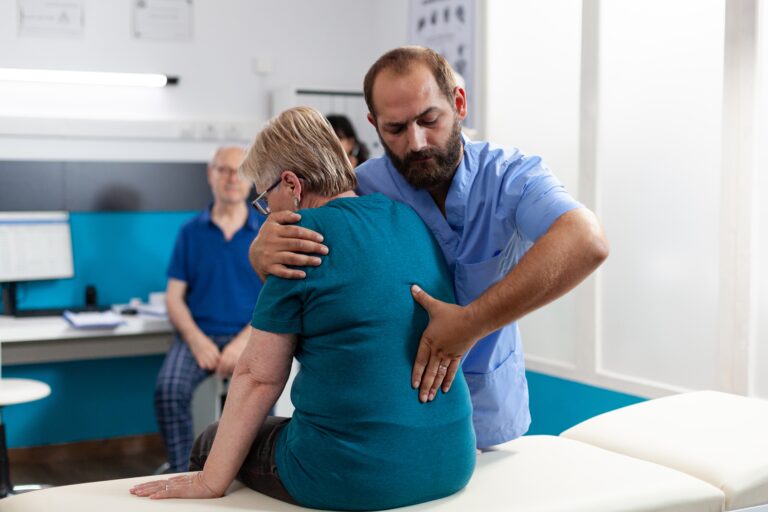
Renowned Spinal Cord Injury Treatment Surgeons
at Wockhardt Hospitals
- Mumbai Central
- Mira Road
- Nagpur
- Rajkot
How Can a Spinal Cord Injury Occur?
A spinal cord injury can have several causes. Sometimes these injuries can occur due to accidents or degenerative conditions or even due to improperly performed medical procedures or surgeries. The most common reasons for spinal cord injuries include the following:
- Birth defects
- Birth injuries
- Degenerative conditions like osteoporosis, arthritis, and degenerative disc disease
- Diseases like tumors or cancer
- Diving accidents
- Falls
- Gunshot wounds
- Infections
- Motor vehicle accidents
- Sports injuries
- Surgical complications
- Trampoline accidents
Different Types of
Spinal Cord Injury
Spinal Cord injuries can be of the following two types:
- Incomplete Spinal Cord Injury: In this injury, a degree of movement is retained below the level of the injury. In these cases, some level of connection between the brain and the body may still be maintained along certain neural pathways. Incomplete spinal cord injuries may further be divided into several categories. Some of these include:
- Anterior cord syndrome
- Brown-Sequard syndrome
- Cauda equina syndrome
- Central cord syndrome
- Complete Spinal Cord Injury: In this type of injury, there is complete sensation loss and movement below the level of the injury. This means that the person has no feeling or control of their limbs or other body parts below the point of injury. Such an individual may have paralysis in all four limbs or just the lower body.
Symptoms of Spinal Cord Injury
- Breathing problems
- Changes in sexual function or sensation
- Difficulty walking or maintaining balance
- Exaggerated reflexes or spasms
- Headaches or dizziness
- Loss of Bowel and/or bladder function
- Loss of feeling in the chest or limbs
- Loss of voluntary muscle movement in the chest or limbs
- Muscle weakness
- Numbness or tingling in extremities
- Pain or intense stinging sensation
- Reduced sensation to touch, temperature, or vibration
- Severe pain or pressure in the back or neck
- Unusual lumps along the spine care.
Tests Before
Spinal Cord Injury Treatment
Before deciding on the treatment plan, doctors will need to determine the source of the injury as well as the impact of the damage. The treatment may also be affected by the medical history, age, health status, and current medical conditions of the patient. That is why doctors will perform a number of tests before planning for further treatment. These tests may include the following:
- Physical examination: This would help the doctors understand the pain as well as the level and severity of a spinal cord injury, which aids in determining the appropriate treatment plan.
- Imaging Tests: Imaging tests are critical in identifying the location and severity of the injury. These may include the following:
- X-ray
- MRI
- CT Scan
- Ultrasound
- Bone scans
- Neurological Testing: In these types of physical tests, doctors assess the patient’s reflexes, sensations, and muscle strength to evaluate the extent of the spinal cord injury.
- Blood tests: This helps determine any current infections, clotting disorders, or ongoing medical conditions that may interfere with the spinal cord injury treatment.
- Urine tests: Urine tests can also help identify any urinary tract infections or other problems related to the kidney that may need to be addressed before treating the spinal cord injury.
- Electromyogram (EMG): An EMG test measures the electrical activity in the muscles to help understand the extent of the nerve damage.
- Somatosensory-evoked potential (SSEP) test: This test measures the electrical activity in the spinal cord in response to sensory stimulation and can help to diagnose the extent of spinal cord damage.
Spinal Cord injuries are serious types of injuries that require proper care and medical treatment to help individuals live normal lives. Pre-treatment testing is a crucial factor that helps doctors decide the ideal course of treatment and determine the long-term outlook for the patient.
Spinal Cord
Injury Treatment
Spinal Cord injury treatment is a complex set of procedures that will differ for every patient. The procedure requires a multidisciplinary approach and will depend on the extent of the damage that the individual has suffered. Treatment may include medications, surgery, rehabilitation, physical therapy, the use of neural prostheses (artificial body parts), and other modern forms of treatment to help patients live normal lives.
While a long-term treatment plan will be decided by the doctors after thorough evaluation and testing, an immediate course of action will aim at improving blood flow, preserving nerve function, and reducing inflammation.
Another important aspect of spinal cord injury treatment includes providing counselling and emotional support to the patient and his family members. Read below to find out the details of the procedure.
Before Procedure
If you or your loved one just had a spinal cord, here is what you may expect:
- Your medical history and current health status will be evaluated to assess the extent of the damage and determine the treatment plan. This would require a complete physical, neurological, and psychosocial evaluation.
- The doctors will explain to you or your loved ones the type of injury you have had, the extent of the damage, how the injury will affect your life, and the possible forms of treatment.
- You will also be given counselling and emotional support during the process.
- Your family members may also be counselled about how to take care of you and your treatment in the future and how to cope with the situation.
Possible Forms of
Spinal Cord Injury Treatment
Spinal cord injury treatment will depend on several factors. These include:
- The severity and location of the injury
- The patient’s age and overall health status
- The presence of other injuries or medical conditions
- The patient’s neurological status and degree of paralysis
- The time elapsed since the injury occurred
- The availability of specialised medical facilities and equipment
- The patient’s personal goals and preferences
How to Prepare
For a Fast Recovery?
Recovery from a spinal cord injury will differ for every patient. It can also be an overwhelming process for both the patient and his family members. To help in maximum recovery, patients and their loved ones are advised to follow the following:
- Have a positive outlook and do our best to follow the instructions provided by the doctors,
- Take all the medications as prescribed.
- If you are undergoing surgery, follow all the pre and post-operative recommendations.
- Eat well, try to follow a healthy lifestyle, and get enough rest.
- Consistently attending physical therapy sessions and following through with recommended exercises can help promote strength, flexibility, and mobility.
- Opt for counselling and other coping therapies provided by the hospitals.
- Talk to the doctors and explore other possible forms of treatment, including Electrical stimulation devices, electronic aids to daily living, modern wheelchairs, computer adaptations, etc.
It is important to follow the treatment plan recommended by healthcare professionals to ensure the best possible outcome. It is also equally important to not lose hope and avail of rehabilitation services for maximum recovery.
Risks Associated with
Spinal Cord Injury Treatment
Spinal cord injuries can be devastating and can lead to disability and even death. Treatment may include medication, the use of devices, and surgery.
Like any medical intervention, there carry a risk of complications, including the following:
- Allergic reactions to anaesthesia or other medications
- Bleeding
- Blood clots
- Damage to surrounding tissues or nerves during surgery
- Inability to regulate body temperature or blood pressure
- Increased risk of heart or lung problems
- Infection at the site of surgery
- Loss of bladder or bowel control
- Loss of bladder or bowel control
- Paralysis in the arms or legs
- Loss of sensation or paralysis below the site of the injury
- Persistent pain
- Sexual dysfunction
- Spasticity, joint contracture
- Respiratory failure
- Death (in rare cases)
Talk with our expert
Life Wins Stories
The vision and leadership of Wockhardt’s Founders have been instrumental in shaping the organisation’s ethos of providing high-quality and affordable healthcare services to patients worldwide. Read and listen to the heartfelt experiences of our patients as they share their stories about the exceptional care they received at Wockhardt Hospitals.



Paresh Vyas
Excellent facility with renowned Cardiologists like Dr Dharmesh R Solanki. Very humble doctors, and good staff. Value for money.

Meena Kothari
Excellent facility with renowned Cardiologists like Dr Dharmesh R Solanki. Very humble doctors, and good staff. Value for money.
Life Wins Stories

Paresh Vyas
Excellent facility with renowned Cardiologists like Dr Dharmesh R Solanki. Very humble doctors, and good staff. Value for money.

Meena Kothari
Excellent facility with renowned Cardiologists like Dr Dharmesh R Solanki. Very humble doctors, and good staff. Value for money.
Learning Wins Life Wins
FAQs on Spinal Cord Treatment
Q. What are the signs of spinal cord recovery?
- Sensation or movement was regained below the injured location.
- Pain around the injury site.
- Regaining control over your muscles below the injury site
- Improved bowel or bladder function.
- Decreased tingling or discomfort.
- Increased balance or coordination.
- Preserving sensory information below the site of damage
Q. Is walking good for spinal cord injury?
For those with a spinal cord injury who can walk, walking is an excellent approach to maintain fitness and health. Additionally, for people who are not injured. Some persons who have suffered a spinal cord injury are able to walk for moderate to long distances, while others can only walk a short distance with the use of a walking device.
Q. Which exercise is best for spinal cord injury?
- Stretching: For those who have suffered spinal cord injuries, stretching is essential for both preventing and treating tight muscles and joints.
- Strength Training: You should concentrate your strength training on the major muscle groups that you have control over.
- Aerobic Workout: The advantages of aerobic exercise for cardiovascular health are substantial.
- Aquatic Therapy: Low-impact exercises used in aquatic therapy help to increase muscular strength and flexibility.
Q. How can I heal my spinal cord injury faster?
- Follow Medical Advice: Follow the treatment regimens that medical specialists propose.
- Engage in Rehabilitation: Take part in physical therapy and exercises specifically designed for your injury as part of your recovery.
- Maintain a Healthy Lifestyle: To help with rehabilitation, lead a healthy lifestyle that includes eating a balanced diet, drinking enough water, quitting smoking, and getting enough sleep.




